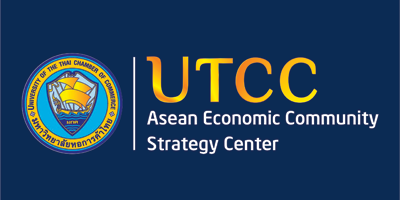Myanmar: No simple solution for high inflation and interest rates
A strong and robust banking sector is vital for developing a national economy. However, businesses in Myanmar are still facing difficulty getting help and support from banks. High bank interest rates and using collateral for loans have put businesses in a difficult position.
Union Minister for Ministry of Planning and Finance U Kyaw Win said at the Union of Myanmar Federation of Chambers of Commerce and Industry (UMFCCI) on February 18 that there are plans to reduce bank interest rates in light of the circumstances.
According to Central Bank deputy governor U Set Aung, negotiations have been conducted between the Central Bank and International Monetary Fund (IMF) and bank interest rates will be cut down only if it needs to be curbed by accounting for local inflation.
Although local bank interest rates are high compared with regional countries, bank interest rates are not very high compared to local inflation rates. That is why experts suggested that the two issues are intertwined.
The Central Bank of Myanmar currently sets a minimum rate of 8.25 percent for deposit interest and 13pc for loan interest as the maximum rate.
Central Statistical Organisation (CSO) announced that local inflation had increased 7.76pc in January, 2017 than the rate in the same period in the previous year. A solution is needed to tackle both the bank interest rate and inflation.
Myanmar’s 13pc bank rate poses a challenge for people seeking capital. Furthermore, the collateral requirement becomes a major obstacle for local businesses to have access to bank loans.
“Capital investment is crucial for setting up a business. Even a business which is set up with family capital cannot have sufficient financial support when it comes to expanding the business. If we seek bank loans, the 13pc interest rate is too high,” said U Nay Lin Zin, who’s a trader.
Banks will have to cut deposit interest rates in order to reduce loan interest rates. Private banks currently provide 8.5pc for deposit accounts, and 10pc for fixed deposits (one year and above). Some banks even set a 12pc for fixed deposits three years and above.
At present, Myanmar’s inflation rate is 7.76pc, but annual inflation rates are above 10pc on average, according to reports from the World Bank.
Comparing the 10pc savings interest rate with increased inflation rate shows that depositors gain only minimal profit.
Experts have pointed out that due to the current circumstances, if the banks were to decrease their interest rates, it would evolve into a scenario where no one would make any deposits.
Furthermore, economic experts have also mentioned that because there was a large amount of currency flow circulating in Myanmar’s national market, there were a lot more occurrences of inflation.
“Because of massive budget spending, and no definitive monetary income, the circulation of currency flow became enormous. So inflation started to happen. That’s why we need to carefully examine the capital … [and] cut down the budget expenditure. There should be solutions made in order to redirect the circulating flow of currency in the national market back to the banks.
“When redirecting currency to the banking sector, the money can only be controlled with the interest rate. If the interest rate were to go down, the capital will then flow out. If the deposit interest rates were high, that would also have an impact on the loans. What we need to do is to search for a systematic solution and resolve this matter,” said U Zaw Phay Win, an economic expert.
“The interest rate is definitely very high. But when the inflation rates are taken into account, we cannot say that the interest rates are that high. The bank’s interest rates are calculated according to the inflation rates. If we decrease the bank’s interest rates when the inflation rates are still high, then there is going to be a disaster,” explained U Soe Thein, a former deputy director general in the budget department of the Ministry of Planning and Finance.
“Banks are operating based on the rift between the loans and the deposit interest rates. If we reduce the amount of bank loans, but could not cut down the deposit interest rates, the banks will then surely collapse. There is no easy solution,” he added.
Myanmar is a part of the ASEAN Free Trade Area (AFTA) and has also signed up to join the ASEAN Economic Community (AEC). As the deadline for Myanmar to join AEC approaches in 2018, there are several requirements still needed to be fulfilled.
Businesses in Myanmar need to develop technologically and improve their product quality to compete with neighbouring countries. Securing funding is a key aspect for this area of development.
The obstacles for these businesses include high bank interest rates and the difficulty to get loans. Firms in neighbouring regions have enjoyed a huge lead in fund sourcing as bank interest rates in those countries are comparatively lower.
“High bank interest rates will be a big impediment for local businesses when we join the AEC,” U Zaw Pe Win, a budget analyst and founder of a social development training school, explained.
Economic specialists pointed out that the inflation rate needs to be reduced to lower bank interest rates.
Currently, causes for high inflation include the country’s budget deficit, Myanmar kyat depreciation in foreign exchange markets, and money circulation from undisclosed, informal sources.
The Central Bank has set the exchange rate for US$1US at K1360 on February 28. This is the reason for the rise of market prices for imported goods in Myanmar.
Source: http://www.mmtimes.com/index.php/business/25177-no-simple-solution-for-high-inflation-and-interest-rates.html


 Thailand
Thailand




